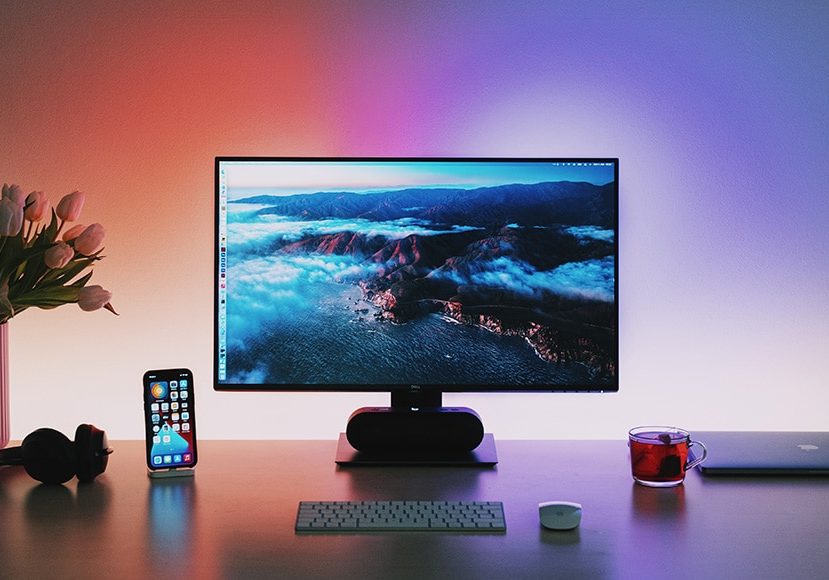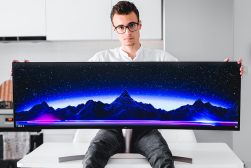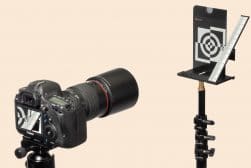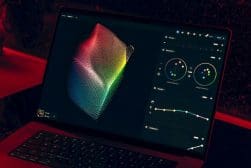
How to Calibrate your Monitor (on Windows & Mac OS X)
Discover the best ways to calibrate your monitor color using free tools available for Windows and Mac OS X. Learn why monitor calibration is so important.
Learn | Photography Guides | By Ana Mireles
Do you know what monitor calibration is? Have you heard of it, but you don’t know if it’s something you need?
Suppose you print a photo and notice it looks different than it does on your monitor. Or, you have multiple monitors for photo editing and see that your images have different colors on each one. In that case, you need to do a display calibration.
As a photographer, you know all about color temperature, and you check that your flash has the same amount of degrees kelvin as the ambient lighting, etc.
However, if you don’t take care of your monitor’s color management, all that hard work is for nothing! You won’t get an accurate color temperature on the final image.
Don’t worry. There are many ways to calibrate the monitor’s colors, brightness and contrast, and I’ll tell you about them in this article.
Some methods are free but less accurate, like the built-in calibration tools on your computer.
Others require special software and hardware, but they will give you an in-depth analysis and calibrate your monitor to perfection.
Anyway, let’s see what your choices are here in 2024.
How do I Calibrate my Monitor for Color Accuracy?
You can choose any number of methods for monitor calibration. For all of them, it’s still important that you follow a few simple steps in preparation.
Wait at least half an hour after you turn on your monitor. This way, it will warm up and reach its normal brightness.
Also, go to the monitor settings and make sure the monitor’s resolution is set to the default / native resolution.
Now, you can use the built-in utility in your operating system to calibrate gamma – which controls the monitor’s brightness and color.
If you want something more accurate, you can use any of the web-based solutions to calibrate your monitor for free. They offer a set of reference images for display color calibration and to adjust contrast and brightness settings.
Up until now, you’re relying on your judgement. If you want something that’s more objective, you can download a color profile. You’ve probably heard about some of the most common profiles like sRGB or Adobe RGB.
Using color profiles is based on numbers and not simple eye-balling that can change based on ambient light, eye strain, and other factors. There are also custom profiles created by professionals for specific monitors.
Finally, if you’re looking for the perfect setting, you’ll need a hardware calibrator. These devices measure the display color and the environmental light.
They offer a technical sheet with all sorts of color data from the current calibration and the previous one.
How to calibrate your monitor using Windows tools
The older Windows versions had the Color Calibration inside the Display menu of the Control Panel. However, to reach it on Windows 10, you have to dig up a bit more.
The easiest way to find the calibration tool on Windows is to use the Windows search bar. Just type Color Calibration and click on it once it pops up in the results. This will open the Display Color Calibration tool.
Here, you’ll have to follow the on-screen instructions. The first step is to adjust the gamma. Then you’ll move on to brightness and contrast and, finally, the color balance.
The tool shows you an example of how it should look, and you’ll have to adjust the settings until you match it. For the gamma and the color balance, you can use the sliders.
However, the brightness and contrast window doesn’t have a slider – you’ll need to find the buttons located on the side or the back of the monitor.
How Much Do You REALLY Know About Photography?! 🤔
Test your photography knowledge with this quick quiz!
See how much you really know about photography...

Once you’re done with all the steps, you’ll be able to compare the new calibration with the previous calibration. That’s it. Click Finish to apply the new settings.
How to calibrate your monitor using Mac OS X tools
If you own a Mac, you’ll need the Display Calibrator Assistant. To access it, you need to open the Apple menu by clicking on the Apple icon on the top left corner of your screen.
Then choose System Preferences – this will open a pop-up window. Inside the System Preferences, look for the Display option and click on it.
Next, click on the Color tab. Now you’ll see the Display profile on the left and three options on the right – click on the one named Calibrate to start the process. With this, a new window will pop up.
Another option is to type ‘calibrate display color’ in Spotlight. Then you can open it via the results from the search. Just like on Windows, you’ll have to follow the instructions that will guide you through the calibration process.
The first step is only for external monitors – it’s the Set-Up. The Display Adjustment asks you to set the contrast control to the maximum. Next, adjust the brightness using a reference image.
Then, it will take you to the White Point Setting – this is the first step for a native Apple display. It advises you to keep the native white point or use a standard white point such as D50 or D65.
If you want to keep the native white point, just make sure this option is checked and click Continue. If you’re going to adjust it, uncheck the native white point option and move the slider – then click Continue to move on to the next step.
After that, it takes you to the Administrator options. It will ask you if you want to allow other users to use this calibration – this doesn’t have a right or wrong answer. It’s up to you.
The next step is to name your profile – this is just so you can recognize it.
Finally, it will show you a summary of the settings. If you’re satisfied, click Done to finish the calibration or Go Back if you want to change anything.
How to calibrate your monitor using a colorimeter calibration tool
If you don’t want to use your computer’s built-in tools, you have two choices. You can use one of the many online tools, or you can buy one of the calibration devices on the market that range from $80 to $500.
One of the most popular web-based calibrators is the Lagom LCD Monitor Test Pages. Here, you’ll find a set of test images you can use for monitor calibration.
Each test image allows you to fine-tune a different setting. The author recommends that you use the images in the order they are presented. With them, you can adjust contrast, gamma settings, sharpness, etc.
Ideally, it will help you to get the best image quality. If you’re considering buying a new monitor, you can download the test pages to a USB stick and try them on the device you want to get.
You can also download standard color profiles or custom profiles created by professional colorists.
Now, if you decide to buy a colorimeter calibration tool, you’ll need to download the calibration software that comes with it.
Fill in all the information about your screen – each software will be a little different depending on the brand you got, but you only have to follow the instructions.
Then you need to plug in the device, which has a spectrophotometer and an ambient light sensor. The colorimeter will read the environmental lighting and give you a report with a recommendation for adequate brightness on your display.
If you have too much direct light or anything like that, it will let you know so that you can adjust it before moving on.
After you’ve set the brightness on the monitor, the software flashes different color gradients and a neutral gray screen. The device will gather information from these colors on the screen to later calibrate the display.
Once it’s done, you’ll get a full report about the before and after settings. Depending on the product you’re using, you’ll probably be able to save this as a custom profile.
In the FAQs below, you’ll find some recommendations for the best calibrator, but consider that the two major brands are Datacolor and X-Rite.
Monitor color calibration FAQs
What are the best monitor callibrator tools?
- Datacolor SpyderX Pro
- X-Rite i1 Studio
- Wacom Color Manager
- Datacolor SpyderX Elite
- X-Rite i1 Display Pro
- Datacolor SpyderCube SC200
How do I know if my monitor is color calibrated?
To determine whether your monitor is calibrated or you need to make some color adjustments, you can use any of the free calibration tests online. Some of the most popular are eizo.be/monitor-test or lagom.nl test pages. Otherwise, you can use a colorimeter calibration tool, but they can be a bit pricey.
Should I calibrate my monitor color?
It depends on what you do. It’s not necessary to calibrate your monitor for gaming or streaming – as most devices already have good enough settings out of the box. However, if you retouch photos that you’ll print or otherwise create content that’s colour-sensitive – then yes, you should.
Final Words
In conclusion, if you use your monitor for gaming, streaming or simply browsing any sort of content – you don’t need to calibrate your screen. At most, you can adjust the settings to your liking – regardless of how accurate they might be.
However, if you create content – whether that’s photos or video – then you should calibrate your monitor. Even minor adjustments that are barely visible on your screen might be very noticeable when you print.
If you own a display color calibration tool or are just researching before purchasing one, leave your questions and comments below so we can start a discussion.
All the best with your monitor calibration!

Check out these 8 essential tools to help you succeed as a professional photographer.
Includes limited-time discounts.













